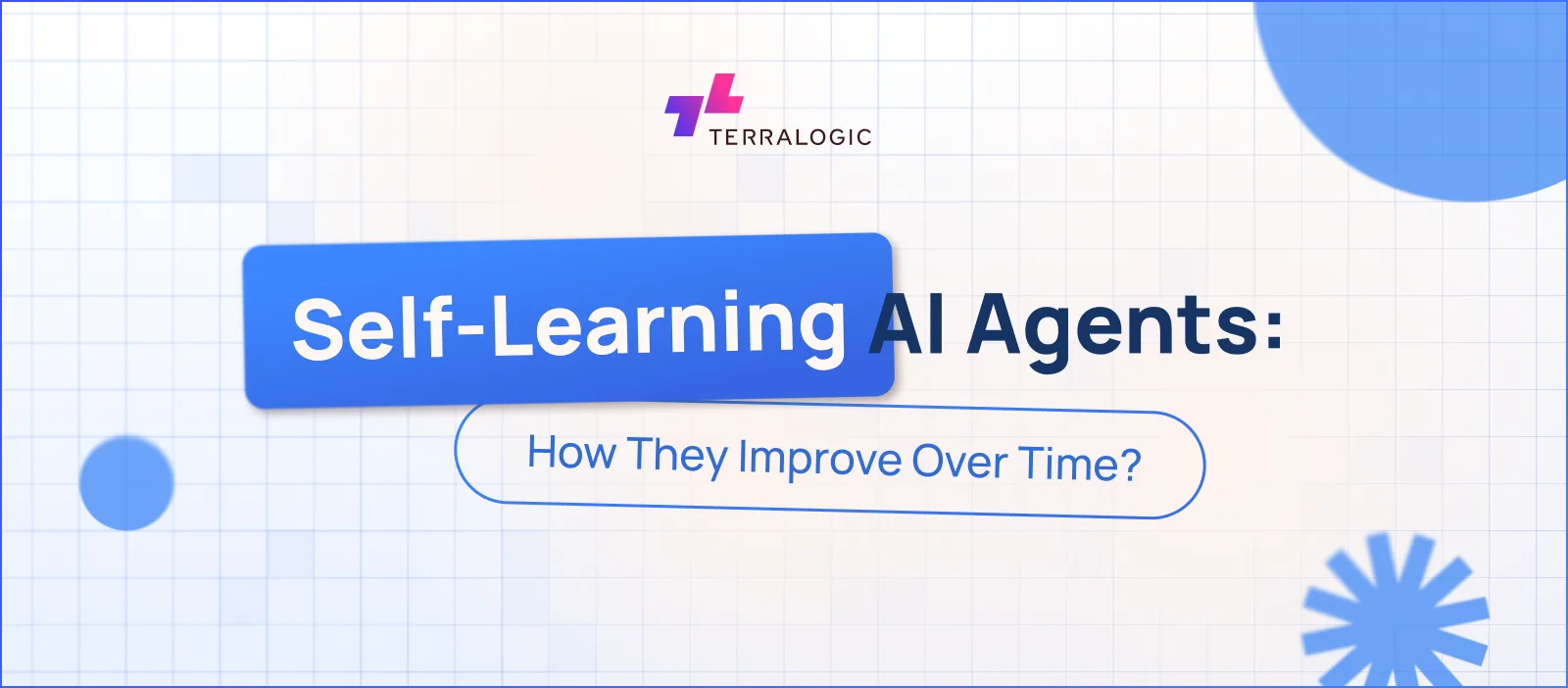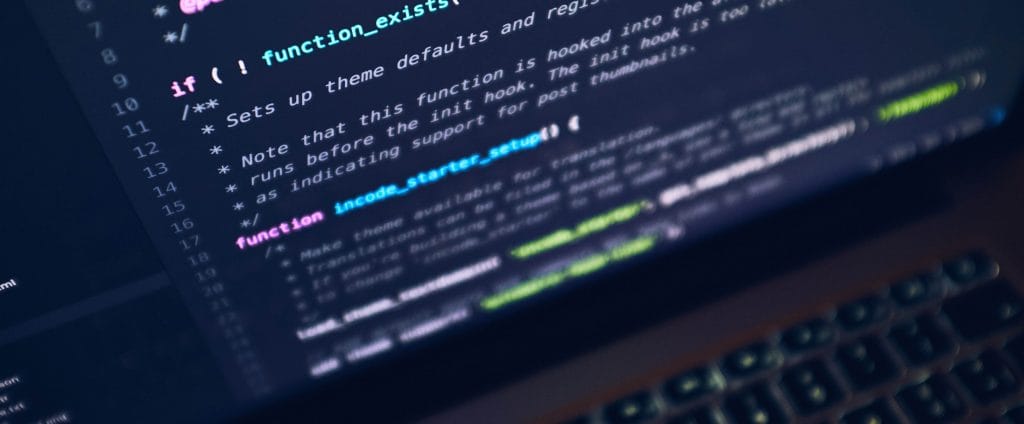Self-Learning AI Agents: How They Improve Over Time
November 28, 2025

Here’s something that’ll blow your mind: Most AI systems perform the same on day 1000 as they did on day 1.
You spend six figures implementing an AI solution. It works great initially. But two years later, your business has evolved, customer behaviors have changed, and that AI system? Still doing exactly what it did on launch day.
This is why 85% of AI projects fail to deliver expected business value. They’re built once and frozen in time while the world moves on.
And this is where self-learning AI agents come in. Self-learning AI agents are fundamentally different. Self-optimizing AI agents don’t just execute tasks; they continuously improve, getting smarter with every interaction, adapting to new patterns, and optimizing their performance without constant human intervention.
Let’s start with how self-learning agents perform and why it matters for your business.
What Makes AI Agents “Self-Learning”?
Beyond Static: AI Agents in Automation
Traditional automation has your Robotic Process Automation (RPA) bots, rule-based systems, and workflow tools that never improve without human programming. You set the rules, and they follow for eternity.
It has been seen that AI agents without machine learning in AI agents do well at training, but once deployed, they freeze. It is like they are pretending to be intelligent.
On the other hand, self-learning AI agents are different. They continuously learn from results and change how they work, all on their own. Think of the difference between a vending machine and a chess player who analyzes every game to improve their strategy.
The Core Capabilities
Autonomous Learning: Autonomous AI agents identify patterns, learn from mistakes, and optimize approaches without waiting for humans to tell them what went wrong.
Real-Time Adaptation: When market conditions change or customer behaviors shift, self-learning agents adjust their strategies based on outcomes. They don’t need you to manually update their programming.
Memory & Context: Unlike systems that treat every interaction as isolated, self-learning agents maintain an understanding of past interactions to inform future decisions. They remember what worked, what failed, and why.
Self-Critique: Advanced agents review their own performance and identify improvement opportunities. They literally ask themselves, “Could I have done that better?” and adjust accordingly.
How Self-Learning AI Agents Actually Improve
AI agents that Learn from Every Interaction
Reinforcement Learning is the engine behind most self-learning agents. Think of it like training a dog: good behaviors get rewards, and bad behaviors get corrections. The agent tries different approaches, measures which ones succeed, and shifts toward strategies that work.
A customer service agent might try three different response styles for the same question type. When customers rate one style higher or resolve issues faster, the agent learns to use that approach more frequently.
Human-in-the-Loop Feedback accelerates learning. When users rate responses, correct mistakes, or provide improvement instructions, agents incorporate this feedback immediately. A continuous learning AI. It’s like having thousands of coaches providing real-time guidance.
Self-Reflection is where things get really interesting. Constitutional AI helps agents review and improve their own work based on clear guidelines. After completing a task, the agent analyzes its approach, identifies what could be better, and adjusts for next time.
The Continuous Improvement Cycle
Here’s how it works in practice:
- Agent performs a task (processes a customer inquiry, generates a report, makes a recommendation)
- System evaluates the outcome against success criteria (customer satisfaction, accuracy, efficiency)
- The agent analyzes what worked and what didn’t
- Adjusts approach for similar future tasks based on learnings
- Cycle repeats indefinitely with each interaction
The magic is that this happens automatically. No human needed to manually update the system. The agent is constantly running experiments, measuring results, and optimizing itself.
Static vs. Self-Learning: What’s Really Different?
Let me make the distinction crystal clear:
| Aspect | Static AI/Automation | Self-Learning AI Agents |
| Performance Over Time | Fixed performance from day 1 to day 1000 | Continuously improves and adapts |
| Handling Novelty | Fails or breaks on new scenarios; needs manual intervention | Learns from mistakes and adapts automatically |
| Improvement Method | Manual reprogramming required | Learns and self-optimizes autonomously |
| Maintenance | High, requires ongoing manual updates | Minimal, mostly self-maintaining |
| Returns | Fixed, do not grow | Compounding, exponential growth |
| Adaptability | Static, does not adapt to changes | Dynamic, applies learned principles to new situations |
| Performance Gap | Remains constant | Widens and accelerates over time |
For example, after 2 years, a self-learning AI agent may be 5 times more effective than the initial version, while static automation remains the same as it was on day 1.
Challenges & Considerations
Let’s be honest about what’s hard here because implementing self-learning AI isn’t without challenges.
- The Learning Curve Period:
- Initial performance is lower than that of rule-based systems.
- Self-learning agents need time to gather experience and improve.
- Requires patience, often tough for executives expecting quick results.
- Initial Volume Requirement:
- You need sufficient interaction volume for meaningful learning.
- An agent that processes 10 transactions per month will learn much more slowly than one handling 1,000 per day.
- Monitoring & Guardrails:
- Self-learning AI still requires supervision and frameworks
- Prevent learning from biased or incorrect data
- Garbage in, garbage out: quality feedback is critical
- Data Privacy & Security:
- Agents learning from sensitive data require robust security measures.
- Compliance with finance, healthcare, and other regulations is mandatory.
- Architectural balance is needed between learning capabilities and data protection.
Real-World Business Impact: Where Self-Learning Agents Excel
Customer Service That Gets Smarter
AI agents that improve over time start at maybe 70% accuracy in handling customer inquiries. And improved to over 95%+ accuracy, without any manual reprogramming.
Freshworks reports that cases reduced average response time by 58% over six months as its AI agent learned optimal response patterns and customer preferences.
The agent learned which tone works best for different customer segments, which information to provide proactively, and how to escalate issues efficiently. All through experience.
Software Development
Development teams report 30-50% productivity increases as adaptive AI agents and systems learn their coding patterns, team preferences, and project requirements.
The agents adapt to your specific coding style, learn which suggestions you accept and reject, and get better at predicting what you actually want. Pattern recognition improves, predictive bug detection gets more accurate, and code suggestions become increasingly relevant.
How to Implement Self-Learning AI Agents Successfully
Start with High-Value, Data-Rich Use Cases
- Focus on the process; learning compounds value over time.
- Customer support, sales, and delivery are areas where quick learning and adaptation give businesses an edge
- Ensure volume for meaningful learning.
An agent processing 100 transactions per day will learn and improve much faster than one handling 5 per week.
Build the Right Foundation
- A strong foundation needs a quality data infrastructure that feeds the right information.
- Implement feedback mechanisms for both automated and human input to get clear signals for learning.
- Build KPIs that track improvement and help to evaluate system performance.
Establishing clear success criteria for agents allows you to understand what looks good.
Partner with Experience
Building production-grade self-learning systems requires expertise most organizations don’t have in-house. Organizations like Terralogic, with specialized AI/ML services and AI Agent as a Service offerings, bring proven experience in building systems.
Getting the right partners with specialists allows you to focus on your core business while leveraging world-class AI abilities.
The Future: Where Self-Learning Agents Are Heading
The cutting edge is getting wild. Darwin Gödel Machine represents LLM agents that iteratively modify their own code to improve task performance. These agents enter true self-improvement loops, discovering modifications their original versions couldn’t even conceive.
We’re moving toward agents that don’t just learn from experience but fundamentally redesign their own architecture to become more capable. Multi-agent systems that learn collaboratively, sharing insights across different contexts. Transfer learning allows agents to apply lessons from one business domain to entirely different areas.
72% of medium and large enterprises currently use agentic AI, with another 21% planning adoption in the next two years. The window for early-mover advantage is closing fast.
Conclusion
The global agentic AI market growing from $5.2B to $196.6B over the next decade isn’t hype; it’s recognition that continuous improvement creates massive value. The 74% of executives seeing first-year ROI and the 39% seeing doubled productivity gains are proof points, not promises.
Early movers aren’t just automating; they’re building systems that get exponentially smarter while competitors are stuck with automation that never improves.
The question isn’t whether to adopt self-learning AI agents. It’s whether you’ll be an early adopter building compounding advantages or playing expensive catch-up while your competitors pull further ahead every single day.
Don’t let competitors build compounding advantages while your AI stays static. The time to move is now.
FAQs
How do self-learning AI agents work?
Self-learning AI agents use reinforcement learning, human feedback, and self-reflection to improve their performance continuously. They execute tasks, measure outcomes, analyze, adjust their approach, and repeat the cycle.
What’s the difference between static AI and self-learning agents?
Static AI performs the same way until humans manually update it, breaks when encountering new scenarios, and delivers fixed returns. Self-learning agents continuously improve over time, adapt automatically to new patterns, learn from mistakes, and deliver compounding returns that grow exponentially, becoming 5x more effective over time without human intervention.
What are the benefits of self-learning AI agents for business?
Businesses see an increase in ROI rates and a boost in productivity. Benefits include continuous performance improvement, automatic adaptation to changing conditions, reduced maintenance costs, compounding returns over time, and competitive advantages that widen as agents get smarter.
How long does it take for self-learning AI agents to show ROI?
It depends on data volume and quality. Most organizations see measurable improvements within 3-6 months, with performance gains accelerating over time as learning compounds.
What industries benefit most from self-learning AI agents?
Customer service, e-commerce, logistics, financial services, and software development show the strongest results. Any industry with high-volume, pattern-rich processes where adaptation creates competitive advantage benefits significantly from self-learning agents.
Keep reading about
LEAVE A COMMENT
We really appreciate your interest in our ideas. Feel free to share anything that comes to your mind.
Our 16 years of achievements includes:
10M+
lines of codes
2400+
projects completed
900+
satisfied clients
16+
countries served




